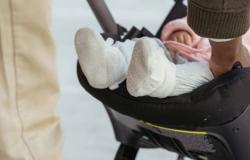TI think back to the 2019 European elections and try to understand who we were. It’s not easy. The last five years have been an accelerated time, the pandemic first, immediately after Ukraine, things we know. Even just evoking our feelings in the first months of 2019 requires an effort, and perhaps it’s not really possible. There had been Brexit, with its long aftermath of abandonment, Europe was ghosted by one of its members, and there had been the string of rowdy Saturdays of the yellow vests, which expressed a shapeless yet broad discontent. That populist, anti-European energy has gradually lost its shiny husk of egalitarianismthen also that little bit of idealistic pulp, and now all that remains is the hard, black core of anti-system anger, handed over to the ultra-right.
For a project of Courier similar to the one inaugurated today, a collection of reports from the countries of the Union, I chose in 2019 to visit a climate change study center on a very rich island in the north of Germany. It wouldn’t occur to me today. Not because the climate crisis has been resolved, far from it, it is proceeding at a greater speed than expected, but today I could only look for the meaning of Europe to the east, along the nervous, almost vertical border of the Baltic countries; along the southernmost, arched one, between Poland and Belarus, which we suddenly became aware of in 2021, with the ignominious migrant crisis described in the most European film of all, Green Border; and especially in the last part of the border, with opposite concavity, which widens painfully until Kharkiv and Bakhmut, up to Lyman and Kupyansk, up to Zaporizhzhia and Odessa and Kherson.
Really strange, really guilty, when you think about it, how five years ago we didn’t worry about that border at all, the only land border of united Europe. Not that we lacked the elements: the invasion of Crimea, the trenches in Donbass, everything had already happened, but we were grappling with the conceptual fatigue of belonging to the Union or not, with an elusive intolerance. The center of gravity of Europe, for us, was completely unbalanced to the west, and towards the east it gradually vanished into the hundreds of kilometers of monotonous plain. Not anymore. Since February 24, 2022, the eastern border has thickened, opened like a wound. Then, through bleeding, it became a keloid, hard and thick like a mountain range, like the mounds of earth from the mines that outline the landscape of Donbass. Regardless of the technical timing of Ukraine’s entry into the Union, today the eastern border of united Europe passes through Kharkiv and Bakhmut, through Lyman and Kupyansk, through Zaporizhzhia and Odessa and Kherson.
In every electoral campaign there is at least one punching-bag word, a word that is mistreated because it is easily mistreated, because defenseless. It makes us think that in the 2019 election campaign the punching-bag word was precisely “Europe”. In 2019 we voted – the half that did – for or against Europe itself. Only five years later this also seems unthinkable. There is a widespread perception, hidden but widespread, of how bad things would have gone, that is, how much worse they would have gone, first with the pandemic and then with the war, if we had fully succumbed to the sovereignist temptations. Since politics is very sensitive to this kind of internal changes, it was tacitly established that okay, Europe is fine, let’s make sure it’s acquired. The punching-bag word of the 2024 election campaign can then be the same one that we have mistreated in every possible way in the last two years: “peace”. Why not? You can also do what you want with the word “peace”.
It can be exploited, emptied, vulgarized, perverted. We can invoke peace where it is not possible to have it, “negotiate” it in exchange for territories that do not belong to us, demand it at the expense of others: it costs us nothing. Misusing the word “peace” is not so different from misusing the word “Europe”, after all. At least as long as someone – someone else, in the east – takes care of ensuring this pacifist fantasy remains intact, with weapons and ammunition arriving too slowly, in the outposts of Kharkiv and Bakhmut, of Lyman and Kupyansk, of Zaporizhzhia and Odessa and Kherson.
We don’t remember his name, but we won’t forget the photograph in which he appears: Nana Malashkhia, the Georgian woman who waved the European flag against the jet of police water cannons in March 2023, in Tbilisi. The Marianne of Europe united against Russian aggression. It strikes me, looking back at it a year later, that she was wearing an Ffp2 mask: an extraordinary synthesis of the past five years. And you strike me as that photograph, which I have seen and seen again, still causes me a surge of emotion. I’m not too inclined towards flag-waving or chauvinism in general, if anything the opposite, but that woman… I think she wouldn’t have meant much to me in 2019, whereas now…
Kharkiv and Bakhmut. We have to learn new boundaries, like at school.
Lyman and Kupyansk. We must not stop repeating names.
Zaporizhzhia and Odessa and Kherson.






